100th Anniversary Great Nave Tour at the Cathedral of St. John the Divine
Celebrate the 1925 construction of the stunning nave inside the world's largest Gothic cathedral!


New York At its Core Exhibition opens at Museum of the City of New York. Photo by Filip Wolak courtesy MCNY
If the 2016 elections have given you a case of the jitters, the perfect remedy is to visit the new permanent exhibit at the Museum of the City of New York, New York At its Core, which opens this Friday November 18th, to place the current situation in the context of the broader history of New York City. The sweeping exhibition has been four years in the making and covers 400 years of history, the first exhibition of its kind to look exclusively at the history and future of this city.
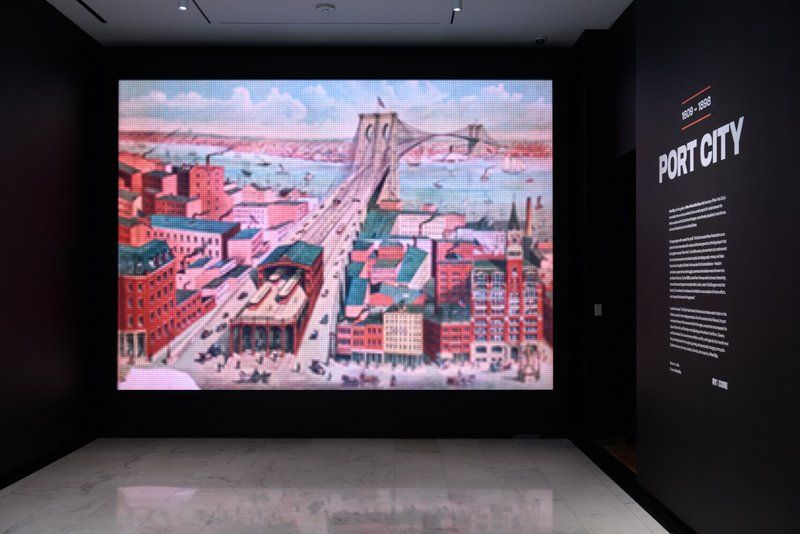
An LED art installation at the entrance of each gallery shows changing images related to the time period. The works are produced by the same team that created Starlight, the LED sculpture than hangs down the main staircase of the museum. Photo by Filip Wolak courtesy MCNY.
New York At its Core is situated on the entire first floor of the museum, split into three galleries. The first gallery, Port City: 1609 to 1898, looks at the years from Henry Hudson’s first contact with the indigenous Lenape population to the consolidation of the five boroughs of New York City. The second gallery, World City, 1898 to 2012, takes you from the burgeoning new agglomerate city through its evolution into a global metropolis. And in the third and largest gallery, the museum looks forward with Future City Lab, which not only looks at the challenges and opportunities to come, but also invites the visitor to participate in shaping the future through innovative interactive design tools.
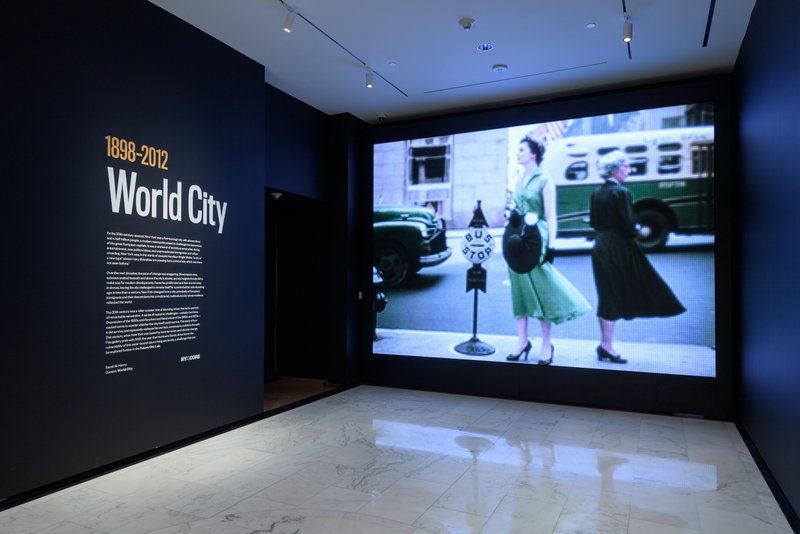
Photo by Filip Wolak courtesy MCNY
We were given a sneak preview of New York At its Core by Sarah Henry, Deputy Director and Chief Curator at the Museum of the City of New York, the day before the ribbon cutting and media preview. “We are not trying to do an encyclopedia here,” says Henry, as she explains how the exhibit is not intended to be an exhaustive historical inquiry, “We are trying to give people a framework in which to think about what makes New York, New York.”
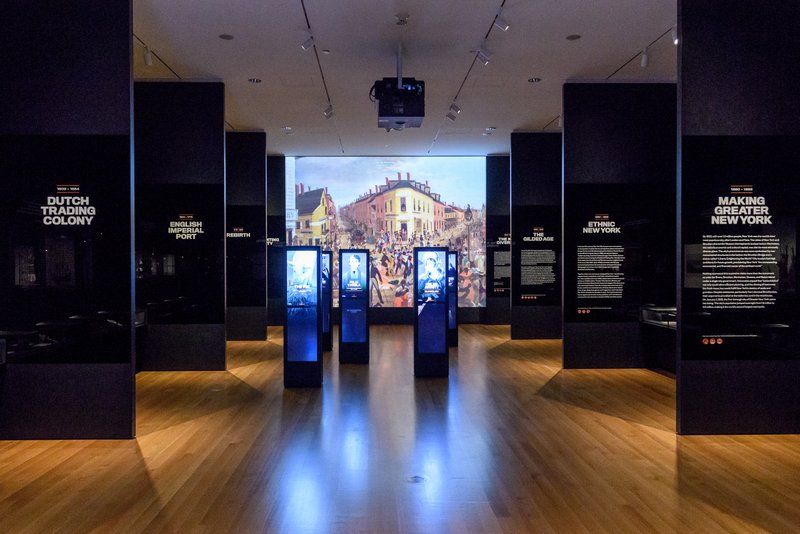
Inside Port City, 1609-1898. Photo by Filip Wolak courtesy MCNY
With the four key words that frame the exhibition – Money, Density, Diversity, Creativity – there is a clear point of view being put forth in New York At its Core. This exhibit is a celebration of all the things that make New York City great, with an acknowledgement that these things are often the product of both necessity and the will of the people. The exhibition also does not shy away from the darker parts of the city’s history – the slave trade, the various financial crises, or 9/11 – but looks at how the residents and the government responded, and how time gives all these events context. With crisis comes opportunity, an idea which is explored throughout all the time periods in the exhibition.
Though New York At its Core is about history, it is equally about our current relationship to the past, and the design of the galleries reflect that modernity – white lettering on dark walls in the first two galleries and an open layout for the Future City Lab.
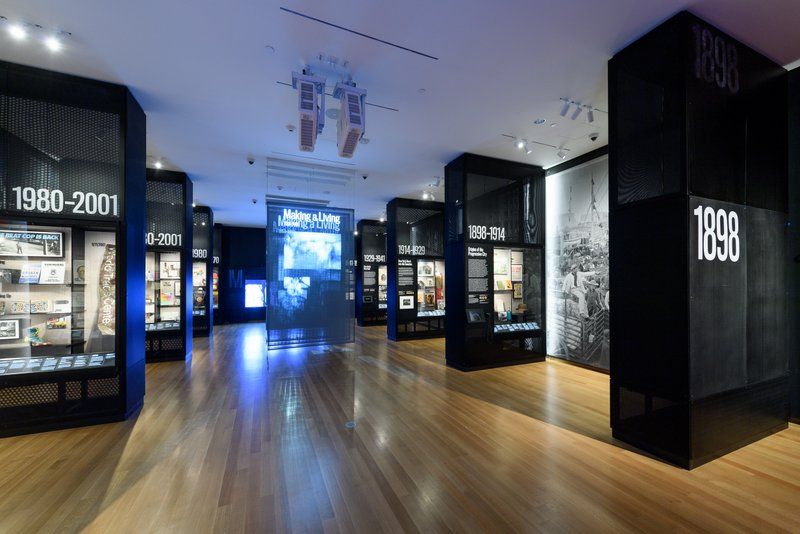
Inside World City, 1898 to 2012. Photo by Filip Wolak courtesy MCNY
From the curator walkthrough with Henry, it’s clear that diversity is not just top of mind in the post-election state, but is also a tangible thread that goes through the entire exhibition. Diversity, as shown in New York At its Core, is a positive, direct outcome of the necessities and constraints of the city. Henry sources it all back to Dutch New Amsterdam:
“New York, unlike Massachusetts Bay Colony, was founded as a for-profit enterprise. We’re not the ‘City of Brotherly Love,’ we’re not the ‘City on a Hill.’ We were founded from the very beginning as a place to make money and that has shaped so much of our city, including diversity, which is in part a consequence of this very economically driven place, where the Dutch were willing to take in anybody, whatever they believed in, as long as they could contribute to making money.”
Henry notes, of course, that among the immigrants to this new colony was the bonded labor force, “so it’s not as if everyone came on their own free will, or had equal access to opportunity, but it did contribute to a pragmatic tolerance.”

Photo by Filip Wolak courtesy MCNY
Another direct consequence of this profit driven settlement was density. “We’re trying to help people understand that density is sometimes a problem, but it’s also an urban asset,” explains Henry, “It’s what gives the energy of the city, it makes us a greener place. But it also creates strains that in turn prompt creative responses. The creativity of the city is actually the product of the combination of money, density and diversity. Creativity then draws in more money, density, and diversity.”
Both the Port City: 1609 to 1898 and the World City, 1898 to 2012 galleries open with a triptych video that maps out the increase in population, diversity and infrastructure system for each of the time periods. “You get to see in a bird’s eye view kind of way the evolution of the city through three different lenses,” Henry shows.
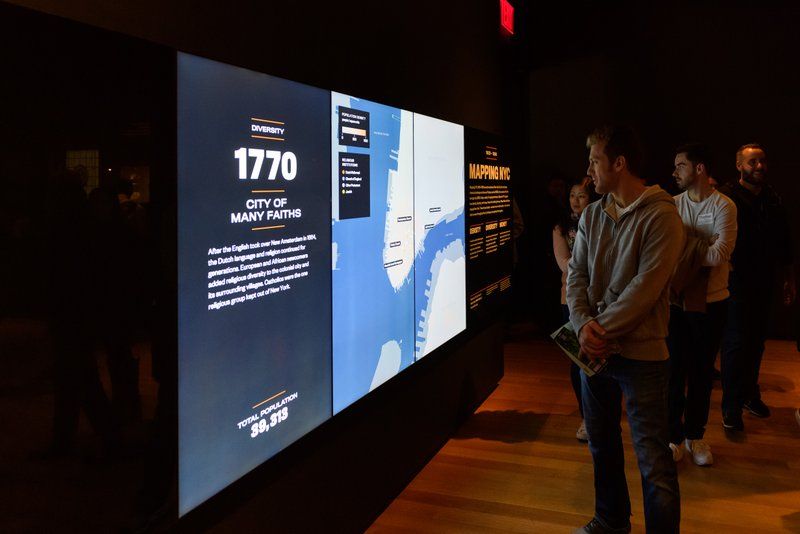
Photo by Filip Wolak courtesy MCNY
New York At its Core is also a reminder of how terminologies shifts over time. The word diversity today is usually applied to ethnic diversity, but “when we look at diversity in the colonial period,” Henry says, “we pay a lot of attention to religion. Religious diversity was actually the most contentious piece of diversity in European history in the 17th and 18th century…the fact that New York was a place that most religions ended up existing, except for Catholics…it was a remarkable experiment, even in those early days.” She also points out where the first known Muslim lived in New York City in 1660, and that he owned land just outside Dutch New Amsterdam as well.
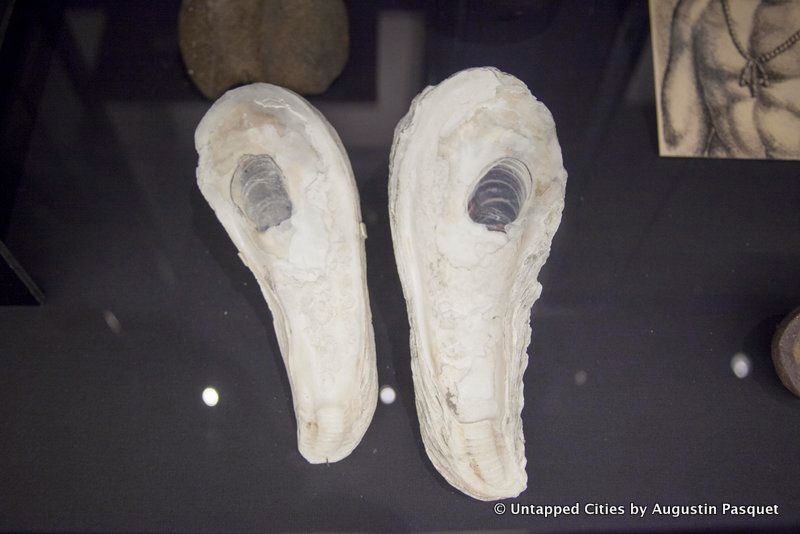
Each gallery is split up into themes within the larger time frame, with artifacts and information curated to gave a sense of the zeitgeist of each time period. In Port City: 1609 to 1898, you move from Dutch Trading Colony to English Imperial Port, to Rebirth, to Confronting Density, to the New Diversity, to the Gilded Age, and end in Making a Greater New York. Some of the most memorable artifacts in this portion of the exhibit include an oyster shell (literally a foot long it seems), a Jewish circumcision kit, a variety of historical currency used after the American Revolution, and a medical kit from Rufus King with apothecary bottles still intact.
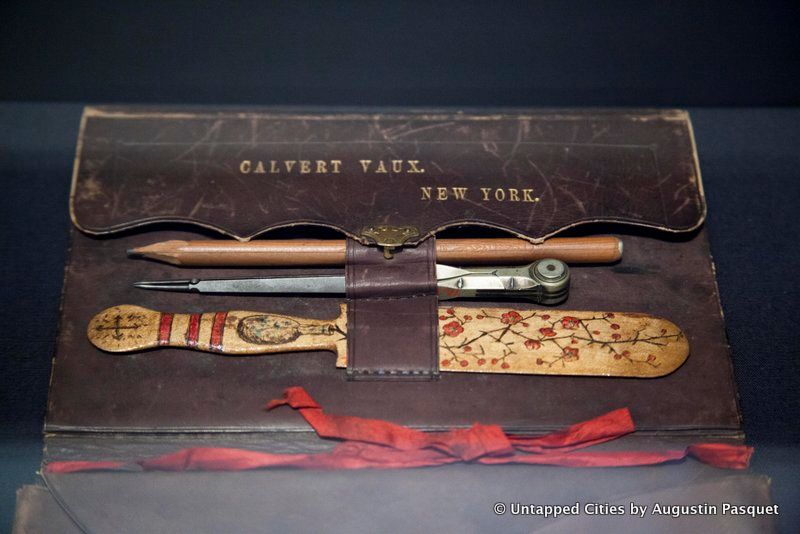
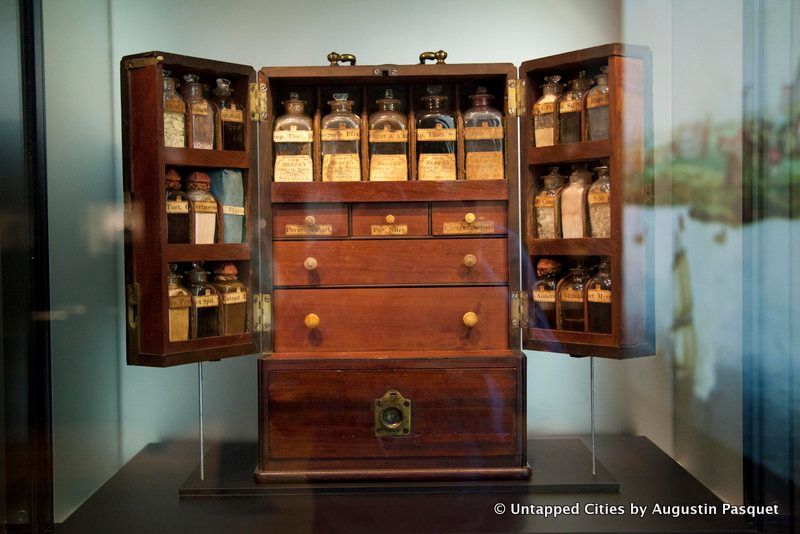
Others include the drafting kit of Calvert Vaux (designer of Central Park), 17 surviving artifacts from an archeological dig in Five Points that was destroyed in the World Trade Center towers on 9/11, a ticker tape machine, tools that built the Brooklyn Bridge and an original draft of the famous poem by Emma Lazarus that’s inscribed on the Statue of Liberty. This same poem ended up on a Post-It note placed by Governor Andrew Cuomo on the Subway Therapy wall in Union Square this week, a testament to its longevity.
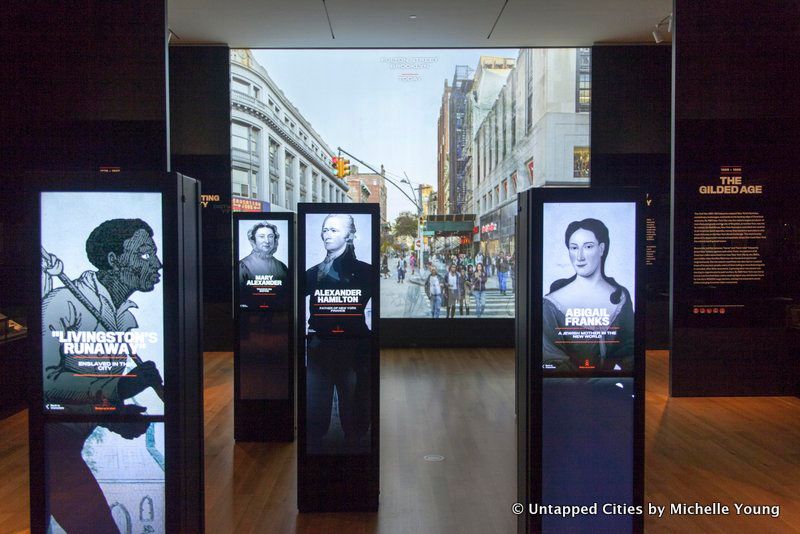
On the back wall of the Port City gallery, seven scenes dissolve from past to present. For example, a vision of Flushing in the days of Mannahatta becomes a photograph by Jeff Chien-Hsing Liao from today, with Citi Field and the new developments under way. Liao had his own exhibit, Assembled Realities, at the museum in 2014. Positioned on the floor in front are five interactive terminals, designed and programmed by the studio Local Projects, which also did the rest of the interactive displays in the exhibit. With each new image on the back wall, the floor units show new sets of characters who lived in New York City at that time that you can use the touch screen to learn more about.
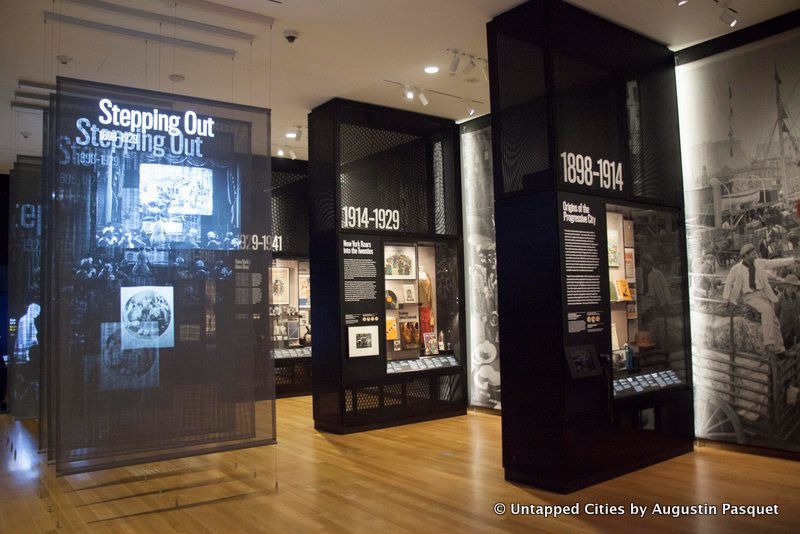
At the entrance to World City, 1898 to 2012, the same triptych video format shows the changing population, diversity and infrastructure in New York City over time. The big takeaway here is that regardless of whether the diversity came from outside the country or within, a great deal of mixing was still happening here, despite national limitations on immigration. The landscape of diversity was still very much present in New York City.
Hanging mesh screens in the middle of the gallery run through the years 1898 to 1912 in thematic chapters: Entertainment and Nightlife, Stepping Out, Building Up, Getting Around, Making a Living, and Street Life. When watching these vignettes, “you’re struck by how much has changed and how much has not changed,” says Henry, “There’s something about the energy of New York you can recognize even when so much has changed.”
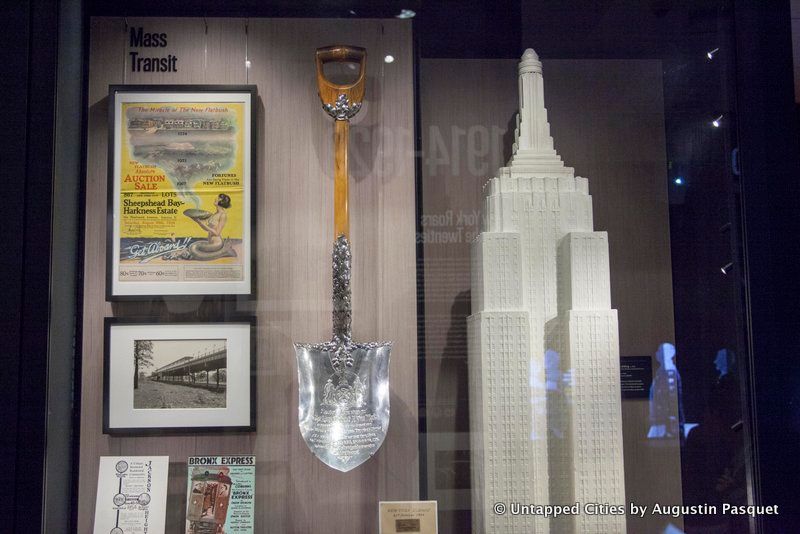
Tall display cases showcase history and items from various time periods, around 10 to 15 years in scope. The room opens with the port city and looks at the manufacturing economy in the five boroughs, and moves on to the opening of the first New York City subway line, showcasing a Tiffany shovel that was used to break ground on the system and the first subway ticket. Side touch screens give an incredible amount of data about the subway system and manufacturing in New York at this time.
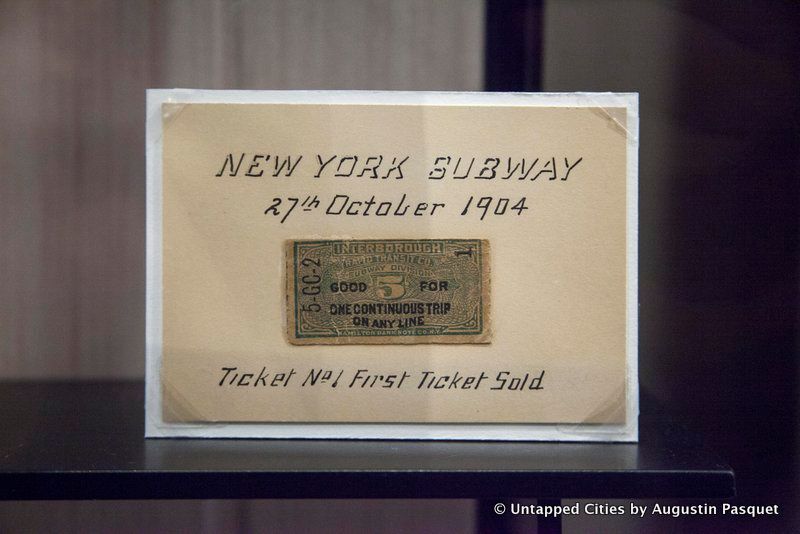
Henry felt it was important to emphasize the importance of manufacturing in New York City:
“There’s massive amount of production going on. It’s hidden in plain sight in New York City, but unlike cities that are famous for manufacturing, but were much smaller like Detroit or Pittsburgh, those places were dominated by a single industry and they were producing things in very large factories. In New York, there were many many different industries and the factories tended to be small so even though they employed many more people and produced much more product, you couldn’t necessarily see it.”
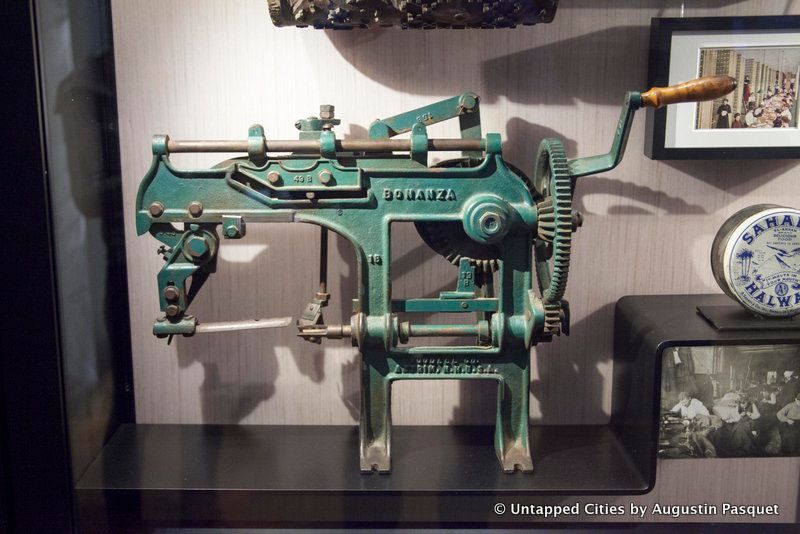
Russ and Daughters Apple Corer
The displays move on to the Progressive Era, the fabulous lifestyle of the Roaring 20s, followed by the Great Depression, where a financial crisis created massive opportunities for infrastructure that were implemented by larger than life figures like Robert Moses and Franklin Delano Roosevelt under the New Deal. “Instead of regulating and preventing harm from being done, now government is being seen as the force that is actually going to transform lives,” says Henry, reflecting on the changing role of government institutions and leadership.
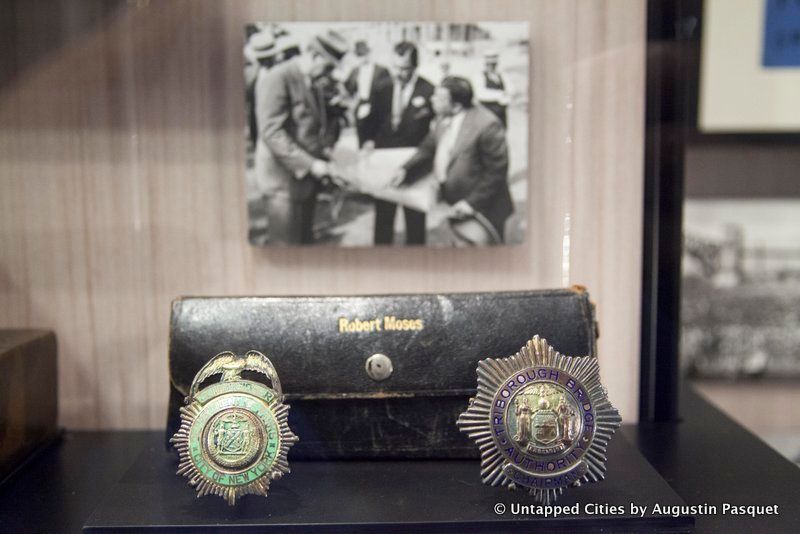
The post-war city display examines changing demographics and the urban renewal projects that were intended to wipe away the problems of the 19th century. This, in conjunction with the de-industrialization of the 1950s and 1960s, led to widespread disinvestment in New York City. There was the sense that the city had been built to serve one type of industry, but the built environment no longer served the needs of the present. While one solution was to clear out the stain of decaying neighborhoods, the financial situation also provided opportunity for artists to move into neighborhoods like Soho and take advantage of low rents.
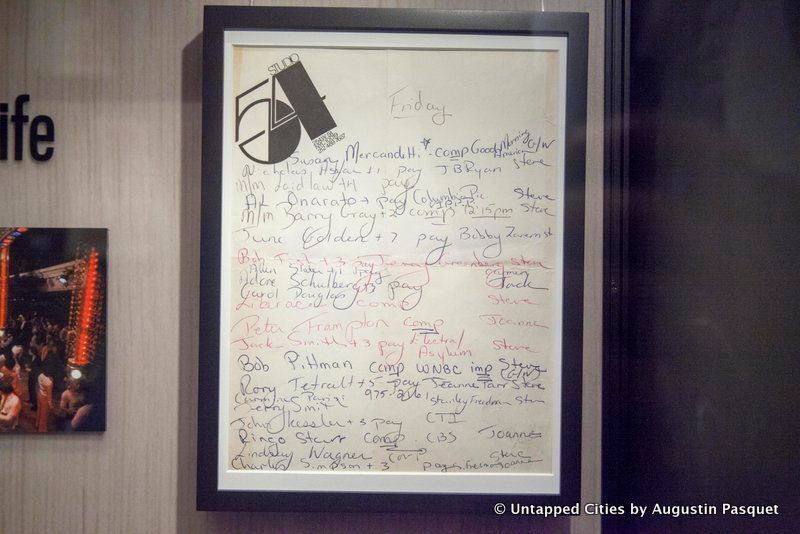
Guest list for Studio 54 includes names like Ringo Starr
The fiscal crisis of the 1970s in New York City encapsulates and reinforces Henry’s contention that out of difficulty come creative reactivity and solutions. As she describes,
“At the same time that everything seemed to be going down the tubes, this enormous creativity is occurring at the same time. The 1970s is a very dynamic period, and people could afford to be here. Out of the hardest hit areas of the hardest hit boroughs came the cultural forms of hip hop and street art that go on to become one of America’s greatest cultural exports.”
The art scene, the nightlife (evidenced by the Studio 54 guest list on display) and the gay culture that existed here in the era before AIDS all “speak to the opportunities are seized upon in a city that some people feel has no future,” she says.
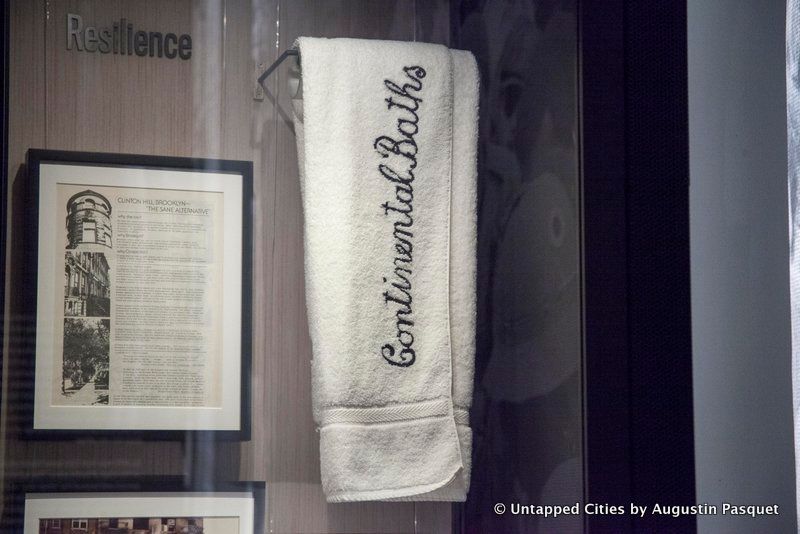
Bath towel from the Continental Baths, a notorious gay bathhouse underneath the Ansonia Hotel
Then in the 1980s, “the question is,” Henry asks, “if New York was so far gone in the 1970s, how, in less than a generation did we end up with too much success, instead of not enough success? People were ready to write off the city all together, so what turned it around?” Here the displays look at the role of finance and money, the resurgence of Wall Street, “with all the stresses that it brings,” says Henry, “and how the post 1965 immigration law once again changed the demographics. In 2000, the four largest immigration groups were from the former Soviet Union, China, Jamaica and the Dominican Republic.
The penultimate section in this gallery is titled “The Safer City?”, which addresses the cleaning up of New York and how 9/11 threw “into question the assumption that we can lift ourselves up by our bootstraps because there are these threats that are bigger than us…At the distance of 15 years, despite the enormity of the tragedy, 9/11 doesn’t appear as something that derailed the city in the way that people felt at the time that it would, which is one reason the exhibition goes past 2001. [9/11] wasn’t an existential threat to the longevity of the city in the way that the fiscal crisis felt like that, or the Depression felt like that.” A crumpled World Trade Center on display serves as a reminder of the attack.
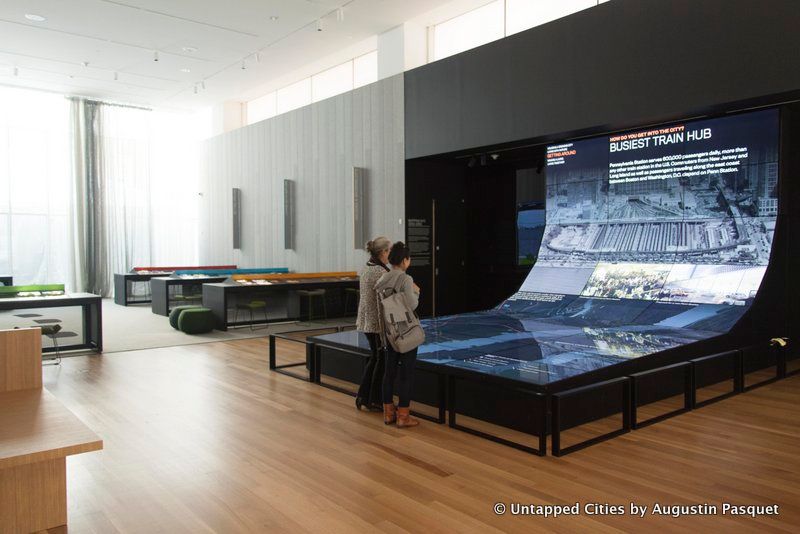
The last section looks at 2001 forward, addressing Occupy Wall Street and Hurricane Sandy, among other moments, that allow for the segue into the Future City Lab. The star feature there is a curved digital display that is the “largest collection of digital data of the city anywhere,” says Henry, and there’s a separate room where visitors can dig deeper into these data sets if they so desire. It’s the intention of the museum to keep that data up to date, so the lab is a true living, breathing tool for the future.
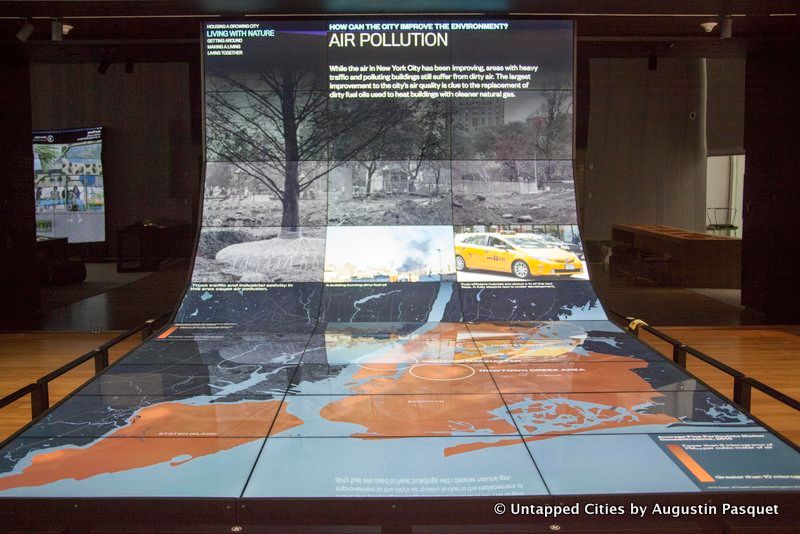
Side tables enable visitors to look into specific subjects: “Making a Living, “Housing a Growing City,” “Living Together,” “Living with Nature,” and “Getting Around” and many of these modules have built in design programs so you can redesign streets or built your own housing complex. These designs can be saved and submitted, and are then displayed on another large screen where thanks to a video and sensor, a pixelated version of yourself, can actually interact with your own design.
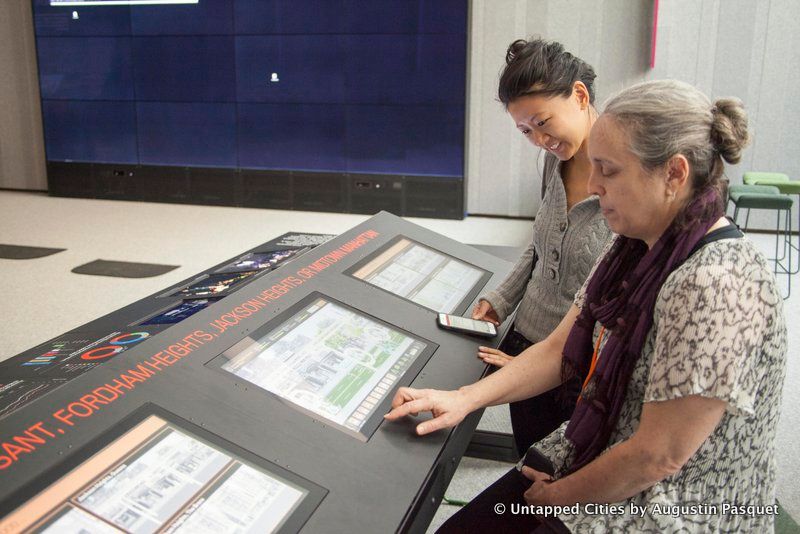
New York At its Core is ambitious in its aims, thorough in its scope, and curated to reveal the most celebratory aspects of New York City’s history and culture, while remaining frank about past issues and future challenges. The exhibition comes at an opportune time, as the city and the country enters a state of deep reflection about our national psyche and faces what appears to e another existential moment. The story of New York represents, not only the origin of the United States, but some of its most contradictory and wonderful aspects. Whether the message of New York At its Core becomes an essential part of a new discourse for America or stands as a beacon of light on its own, it will be an important and landmark exhibition for this city.
See more information about New York At its Core and join MCNY this weekend for Gotham Groove, a 32 hour overnight celebration of the opening with free admission.
Subscribe to our newsletter